This blog article was originally published on February 15, 2018, and has been updated. The last previous update was August 4, 2020.
In this simple exercise you will determine the total population that is within proximity of an earthquake with measured shake intensity. The analysis will be performed using Map Viewer analysis tools with ArcGIS Living Atlas content. Note that appropriate privileges are required to use analysis tools to complete the exercise. The workflow is:
- Use ArcGIS Living Atlas layers to create a recent earthquake map.
- Identify a quake event for the analysis.
- Filter the intensity layer to use only areas where the intensity is 4 or greater.
- Dissolve the boundaries to use in analysis.
- Determine the total area.
- Enrich the dissovled polygon with population data.
- Finalize the map, and display the results.
Make a map of recent earthquakes
Step 1 — Go to the Living Atlas website and sign in using your ArcGIS account.

Step 2 — Open the Browse tab and enter “recent earthquakes” in search.

Step 3 — Locate the Recent Earthquakes feature layer and click the thumbnail or title to open the item details.
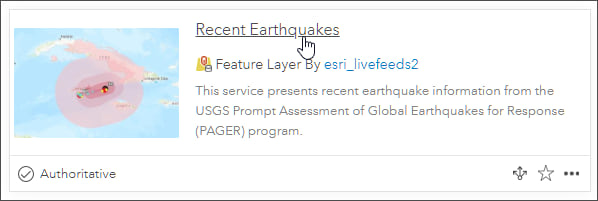
From the Recent Earthquakes item details we learn that quakes are displayed by magnitude along with impact information. Events are updated as frequently as every 5 minutes and are available up to 30 days, except for events of magnitude less than 3.0 (retained 3 days) and events of magnitude less than 4.5 (retained 7 days). Labeled quakes are those with a PAGER alert, a measure of the scope and impact of the event.
Step 4 — Open the layer in a new map. Save the map for future use.

Locate a quake event for analysis
Step 5 — Explore the map to find an area of interest. As you explore the map, click features to learn more about them. Note that Recent Earthquakes is a group layer containing Events by Magnitude and Shake Intensity. To focus on one of the layers, use visibility to hide pop-ups.
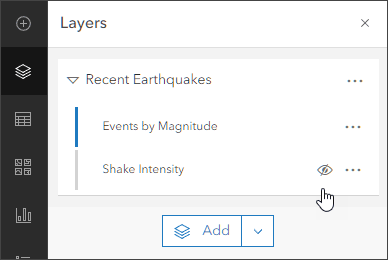
The Events by Magnitude layer pop-up displays the magnitude, depth, date, time, PAGER alert status, and includes a link to the USGS event details.
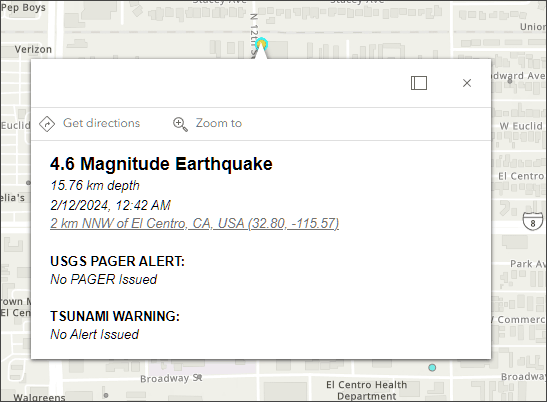
The Shake Intensity layer pop-up displays the Mercalli Scale intensity and a description of what was felt and any expected damage.
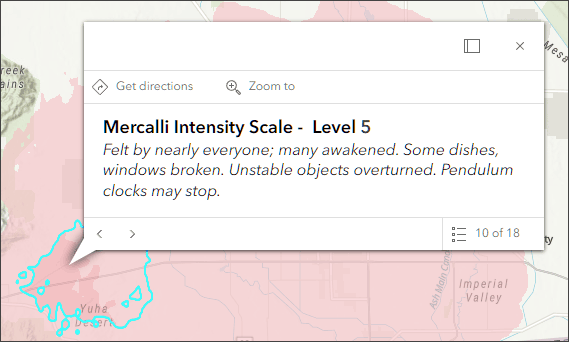
At the time of writing this blog article, a quake near El Centro, California, was chosen for the analysis.
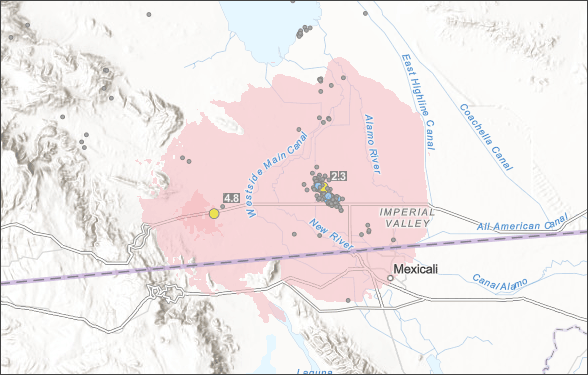
Filter shake intensity
Apply a filter to the Shake Intensity layer to show areas with an intensity of 4 or greater, eliminating the lesser intensities where the quake is less likely to have been felt or cause damage.
Step 6 — From the Layers pane, open the Recent Earthquakes group layer and select Shake Intensity.
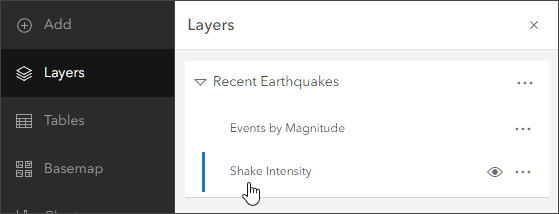
Step 7 — From the Settings (light) toolbar, open the filter pane and click Add expression.
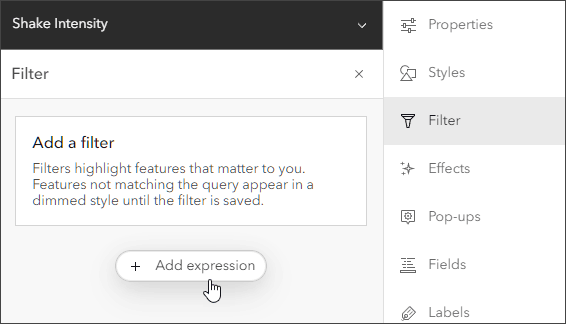
Step 8 — Create the filter expression.
Expressions use the general form of <Field_name> <Operator> <Value>. Use the dropdown menus to create the desired filter, in this case Intensity value is at least 4. When finished, save the filter.
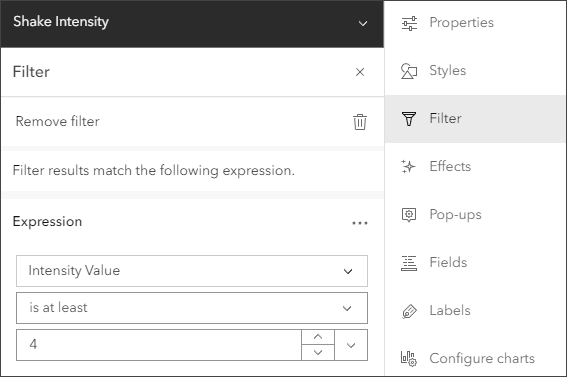
Dissolve the boundaries
Since there may be overlapping or disconnected polygons matching the expression, dissolve the layer to create a single, multi-part polygon for further analysis.
Important: Make sure you are zoomed to the area around the quake(s) of interest. We will use the display extent to limit the analysis to only this area, otherwise the analysis will be applied across the entire extent of the Recent Earthquakes layer.
Step 8 — From the Settings (light) toolbar, click Analysis.
Step 9 — In the Analysis pane, click Tools.
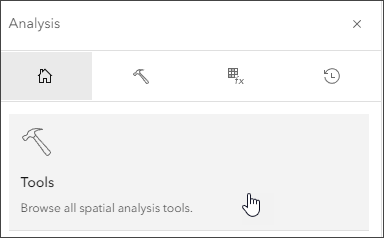
Step 10 — Locate the Dissolve tool. You can find it in the Manage data section, or can use search.
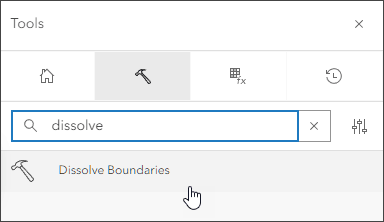
Step 11 — Enter the Dissove Boundaries tool inputs and settings in the tool pane as follows:
a – Select the Shake Intensity layer as the input features.
b – Enter an output result layer name.
c – Open Environment settings
d – Choose Display extent. This will limit the analysis to only the area that you have zoomed to.
e– Click Run when finished.
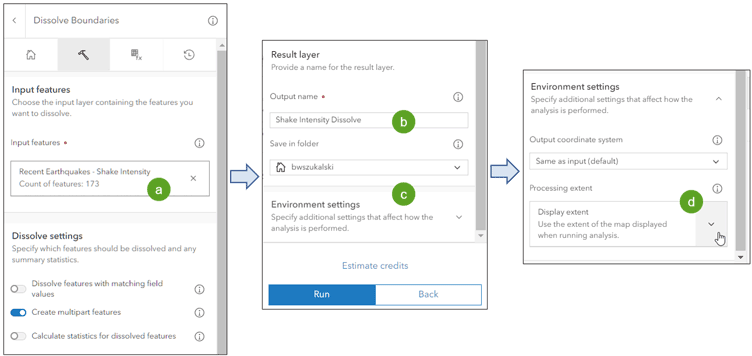
You will see a notification that the analysis has been submitted and can view the current status in the tool history. When completed, the layer specified in Step 11b above will be added to your layers pane.
Step 12 — Examine the results. Hide visibility on the Recent Earthquakes group layer and click the dissolve layer features to view its pop-up.
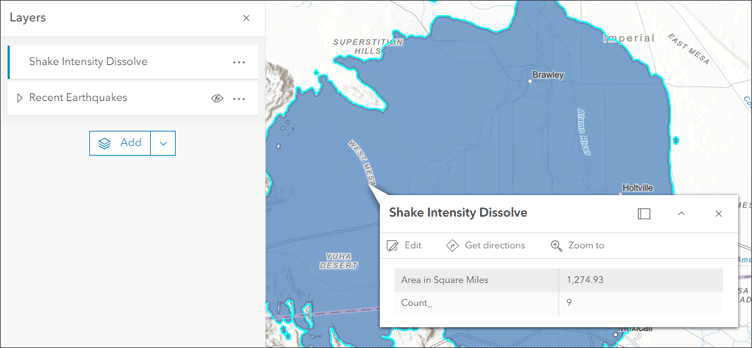
Enrich the dissolved layer
Now that we have a dissolved multi-part polygon, we can enrich the layer to learn more about the population (or other enrichment variables) in the earthquake area.
Step 13 — Locate the Enrich Layer tool. You can find it in the Enrich data section, or can use Search.
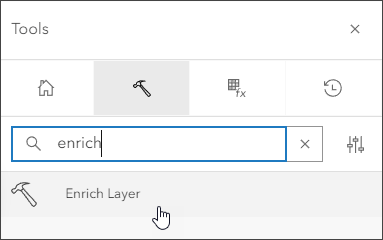
Enter the Enrich Layer tool inputs and settings in the tool pane as follows:
Step 14 — Select the dissolve layer (the layer created in Step 11 above) from the list.
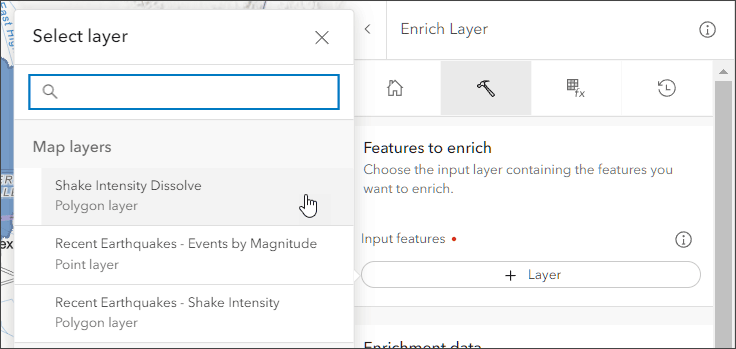
Step 15 — Click (+ Variable), then select Population in the Data Browser pane. Ensure that United States and the most recent data year are selected from the Data Browser drop-downs.

Step 16 — Check the box for 2023 Total Population (Esri). Click Select when finished.
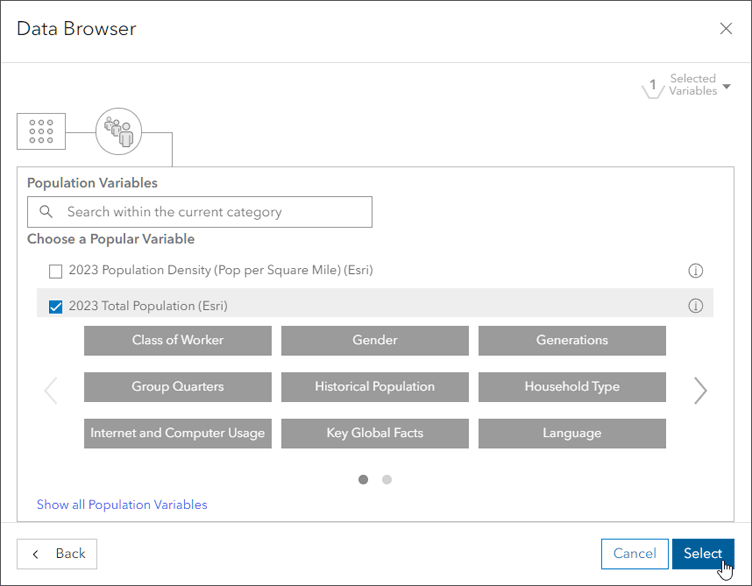
Step 17 — Enter a name for the output analysis layer, then click Run.
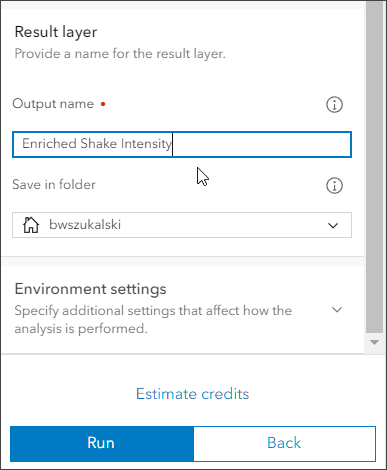
You will see a notification that the analysis has been submitted and can view the current status in the tool history. When completed, the layer specified in Step 17 above will be added to your layers pane.
Step 18 — Examine the results. Hide visibility on the Recent Earthquakes group layer and dissolve layer, then click the enriched layer features to view its pop-up.
The pop-up shows the total population for the earthquake intensity area. If you have selected other variables, they will also be included in the layer attributes.
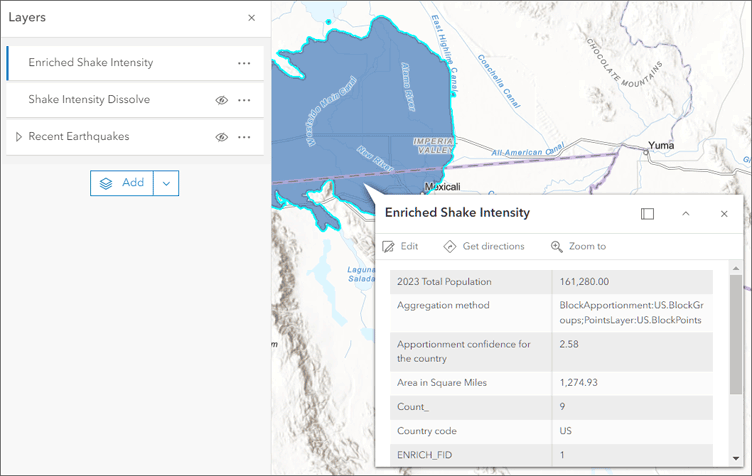
Finalize your map
To complete your map you can remove unneeded layers, choose different basemaps, apply effects and blending, and configure the layer pop-up. The map can then be used in a variety of configurable apps and app builders, in stories, or even in custom JavaScript applications.
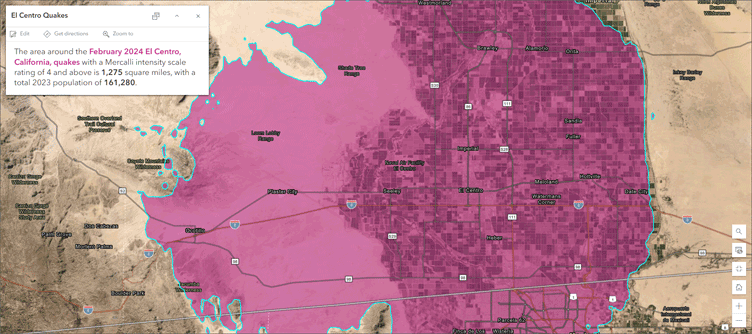
More information
For more information, see the following:


Commenting is not enabled for this article.